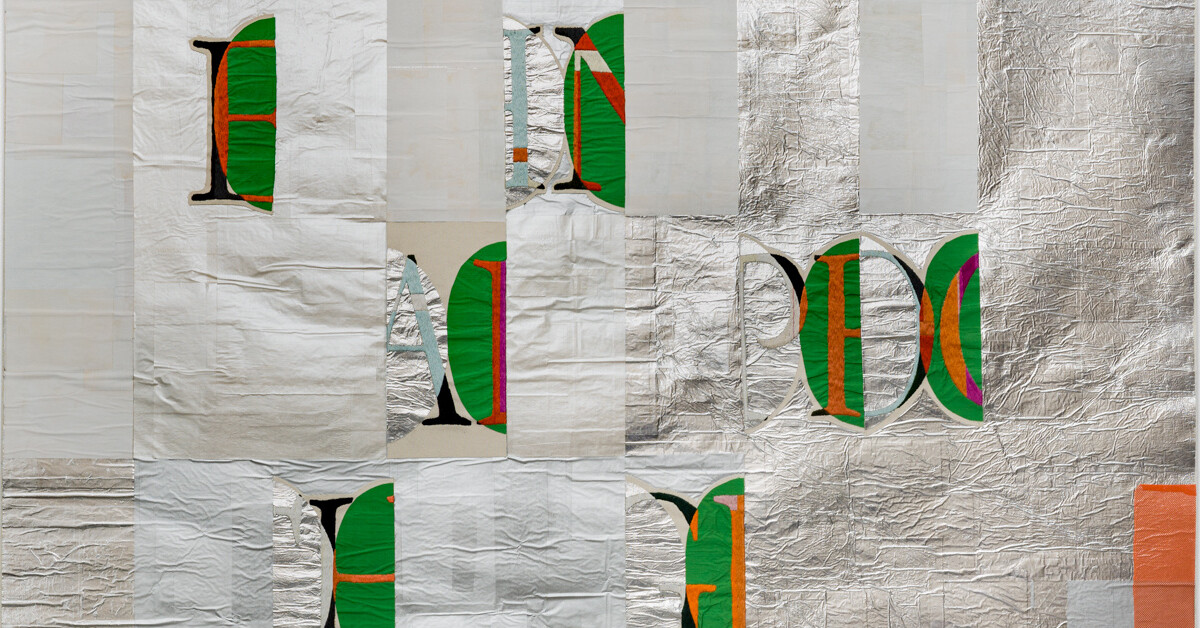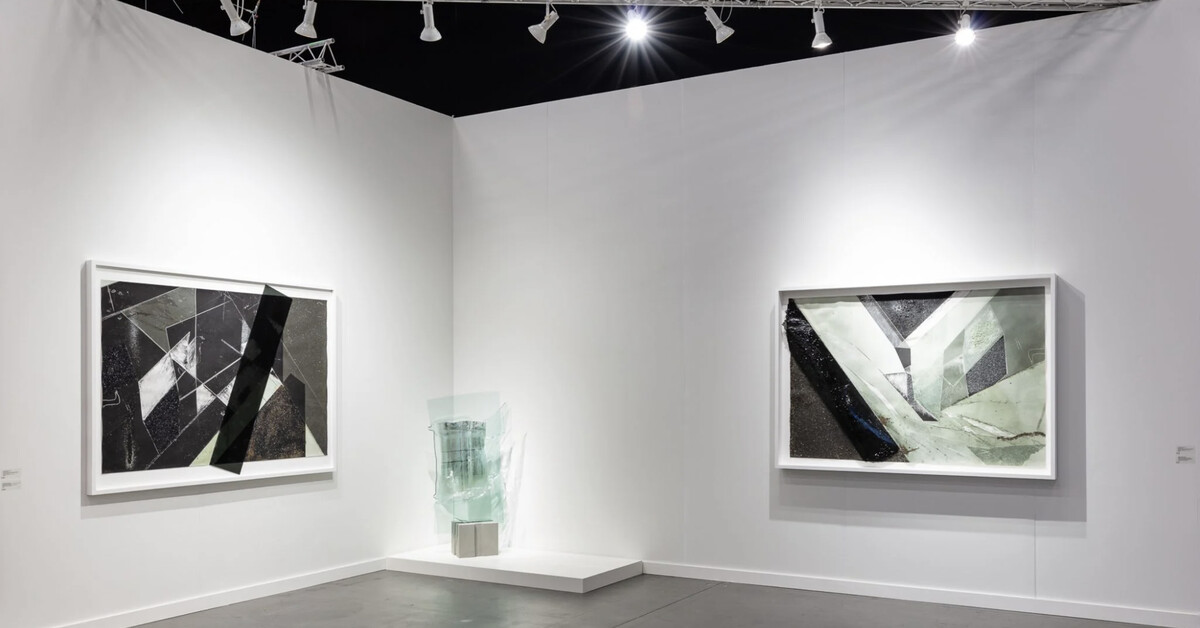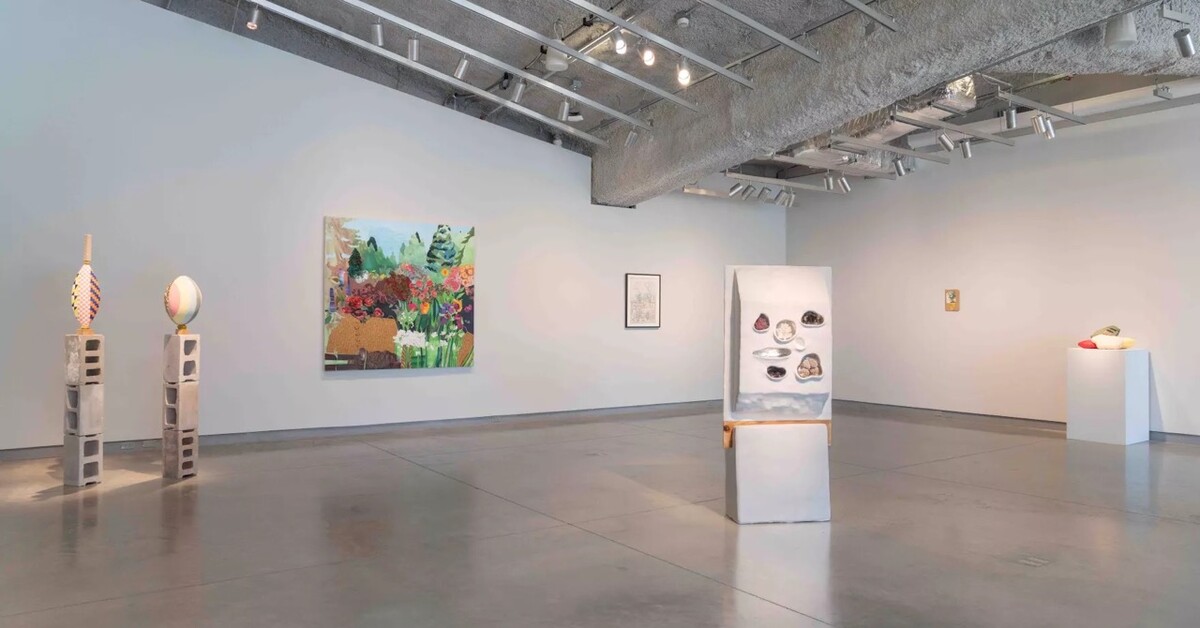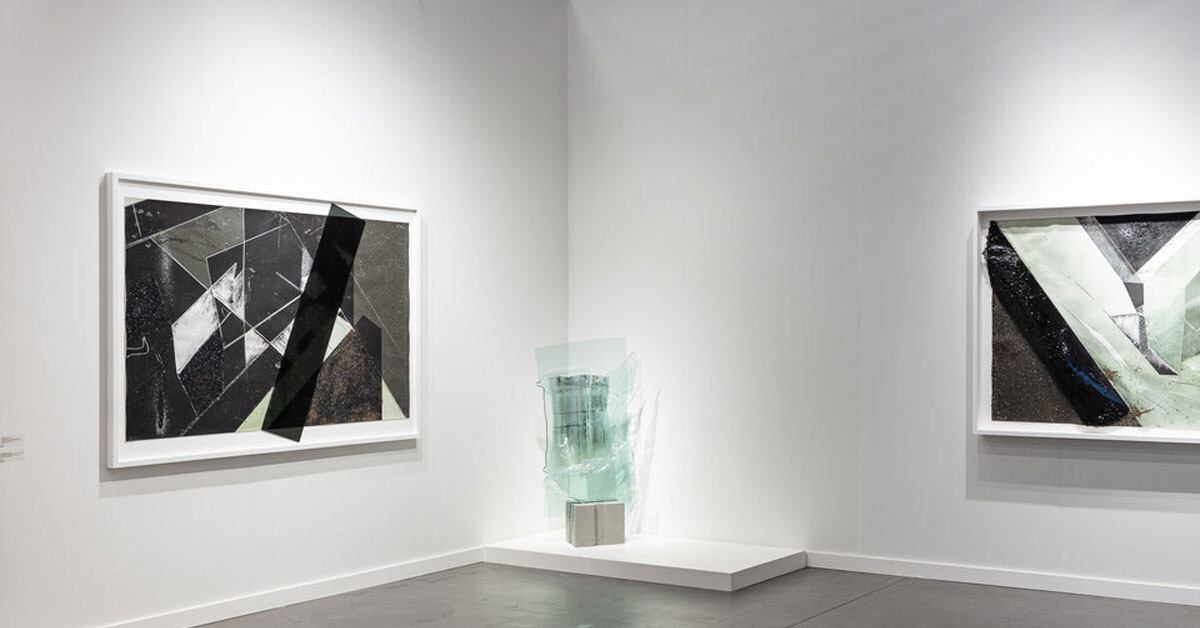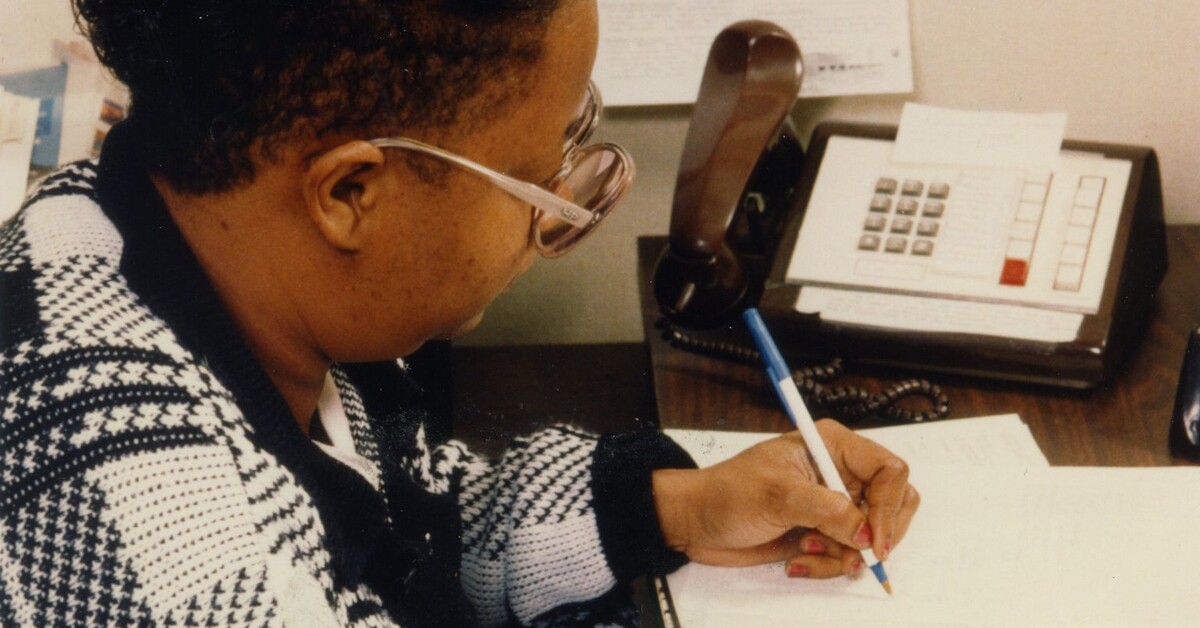The Black Female Artists Redefining Minimalism
The New York Times Style Magazine / May 10, 2024 / by Adam Bradley / Go to Original

“Liquid A Place,” a 2023 sculpture by Torkwase Dyson that was installed in Palm Desert, Calif. Credit: Lance Gerber
JENNIE C. JONES was a 20-year-old art student when she first saw the work of the minimalist painter and sculptor Ellsworth Kelly installed at the Art Institute of Chicago in 1989. These were some of Kelly’s signature panels: bold, monochromatic shapes of saturated color in oil on canvas. They were flat like paintings but sculptural in their defiance of right angles. Jones recalls being struck most of all by what Kelly’s work displaced. It occupied the second floor of the museum’s two-story sculpture court, which had been redesigned the previous year to showcase classical sculpture and painting. “They took down all these other artists to put up this suite,” Jones says. “I was so secretly envious that Kelly was able to hold that space.” Such freedom claimed by a renowned white male artist stood in contrast to her own growing sense as a young Black woman artist of being pigeonholed, of that same freedom — of space, of form — not being available to her.
Today, Jones, 55, is a celebrated minimalist whose work on paper and canvas, in sculpture and sound, is scrupulously reduced to its geometries, its tones, its colors. Next April, she will take over the Metropolitan Museum of Art’s roof garden, where she’ll debut her first multiwork outdoor sculptural installation. She occasionally paints in acrylic directly onto acoustic panels, sometimes in muted grays and whites that very nearly appear to blend into the wall. Seeing Kelly’s radical reductivism on such a grand scale was a provocation, one that redirected her trajectory. “Where am I in this story?” Jones thought. Over time, she found answers, both in the work of artists like Kelly and in what she calls “alternative origin stories” through which she traced her nascent interest in minimalism to the Black diasporic tradition, from Gabonese masks and Cameroonian mud huts to Miles Davis’s spare solos performed with his back turned to the audience.
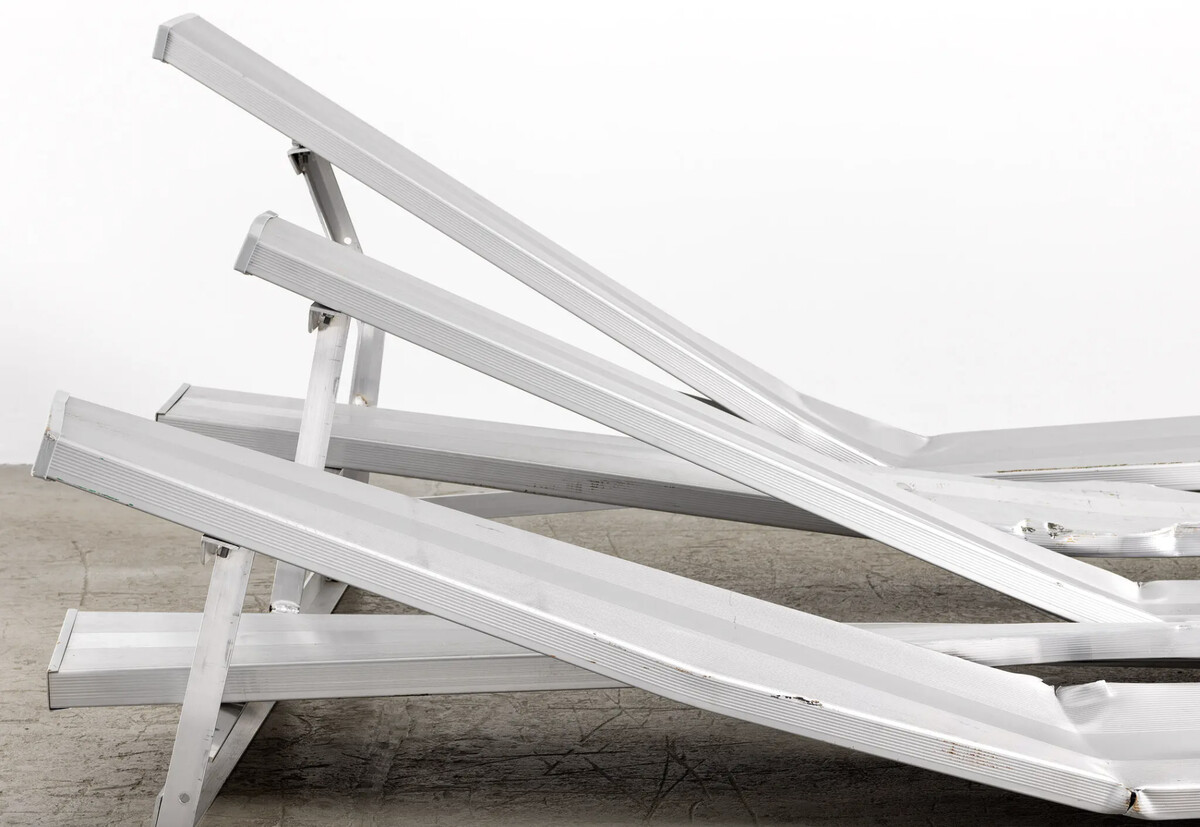
A detail from Nikita Gale’s 2022 show “End of Subject” at 52 Walker in New York.Credit…© Nikita Gale, courtesy of the artist and 52 Walker, New York. Photo: Kerry McFate
JONES IS ONE of several contemporary Black women artists for whom minimalism — long marked by its hypermasculinity and by the conspicuous absence of nonwhite artists — has unexpectedly become an expressive language in which they are fluent but don’t always, or only, choose to communicate. The first wave of minimalism in America emerged as a postwar avant-garde that sought to extinguish artist subjectivity in favor of the object — a rejection of the excesses of self-expression and of the cult of genius that had come to define Abstract Expressionism and other movements of the 1940s and ’50s. In response to political polarization, economic instability and war, minimalists in the 1960s called for austerity and a return to aesthetic first principles: A work of art should reveal nothing more than itself; or as Frank Stella put it in 1966, “What you see is what you see.” Minimalism embraced cheap, mass-produced materials — plywood, granite, brick, metal — in order to, in the late Carl Andre’s words, “get down to something which resembles … some kind of blankness.” One of the most famous works of minimalism is Andre’s “Equivalent VIII” (1966), an arrangement of 120 firebricks, about which the artist told the BBC, “My work doesn’t mean anything.”
Drawing upon a minimalist vocabulary of object and image, Jones and her peers often bring to bear a more personal and expressly political set of conceptual and aesthetic aims. Aria Dean, 30, a New York-based sculptor and theorist who crafts “objects that speak to the truth of the process of their coming into being,” cites the influence of Robert Morris, who used basic carpentry techniques to argue that art should allow “the spectator to focus on their physical relationship to the work, the particularity of its space of encounter in real time.” Bethany Collins, 39, who lives in Chicago, occasionally makes simple shapes on handmade paper that have been compared to the work of Agnes Martin; she also recently completed a series titled “Old Ship,” in which she uses pink granite dust from the base of a dismantled Confederate monument in Charlottesville, Va., to forge three-dimensional forms on canvas inspired by architectural details from the Old Ship A.M.E. Zion Church in her hometown, Montgomery, Ala. Nikita Gale, 40, lives in Los Angeles and uses manufactured materials that riff on the legacies of Andre and Michael Heizer. In the artist’s 2022 exhibition “End of Subject” at New York’s 52 Walker gallery, everyday objects like barricades became metonyms for the ways in which individuals organize, divide and view one another in social settings.
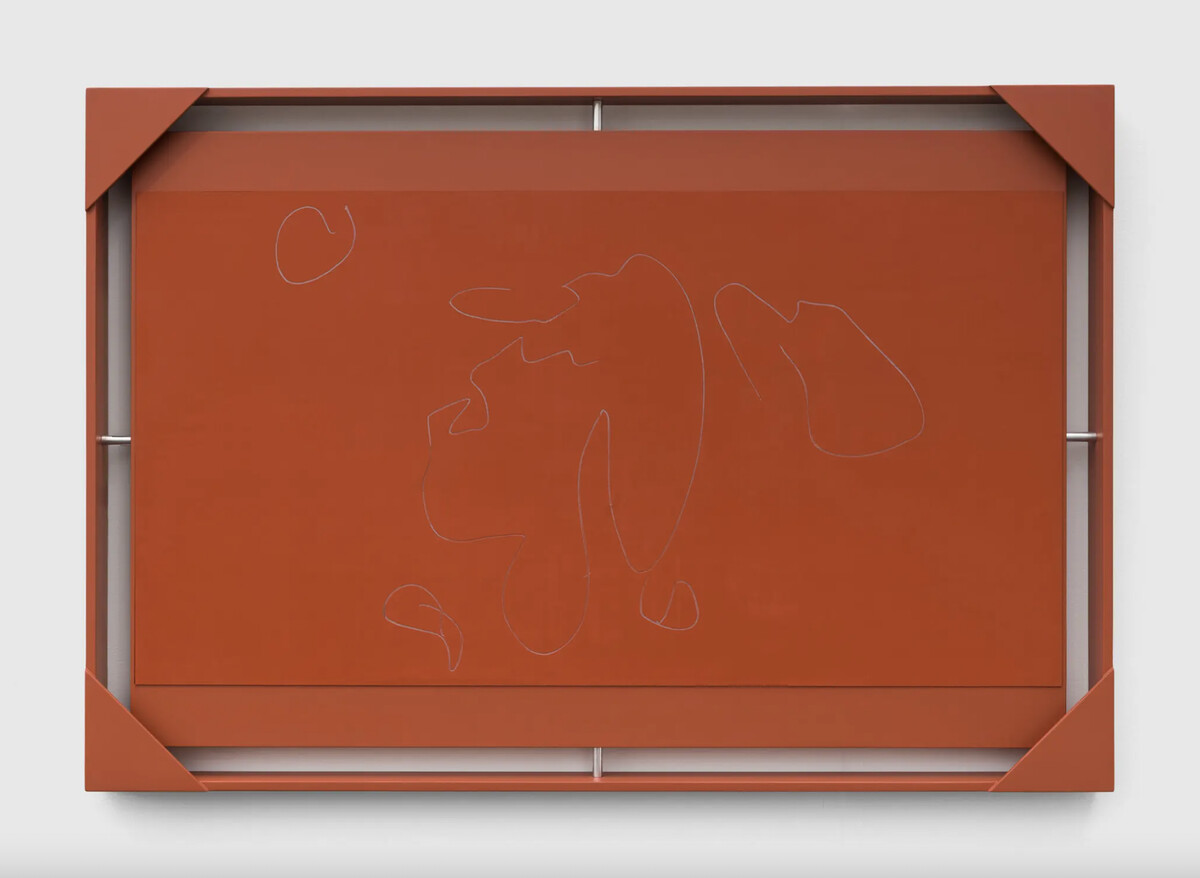
Aria Dean’s painted wood-and-silicone rubber piece “Untitled, Man,” from 2022.Credit…Image courtesy of the artist and Château Shatto, Los Angeles. Photo: Ed Mumford
In making such work, they are often still — as Jones was in 1989 — coming up against the expectation that their art should hew to a different set of traditions. Though the history of nonfigurative work by Black artists is rich and deep, from Sam Gilliam to Alma Thomas, Norman Lewis to Stanley Whitney, Black art has long borne the expectation of figuration and of explicit political statement. The imperative to make meaning clear — and to do so primarily through figuration — has its roots in a tradition of resistance. It is a matter not simply of style but of political necessity: that the Black artist’s mastery of form could serve as evidence against white supremacy’s mismeasure of Black creativity. Images of noble and beautiful Blackness could also function as a necessary counterbalance to the pernicious output of Black stereotypes found throughout the history of Western art. The greatest champion of the power of such images was W.E.B. Du Bois, who argues in his essay “Criteria for Negro Art” (1926) that “[a]ll art is propaganda and ever must be, despite the wailing of the purists. … I do not care a damn for any art that is not used for propaganda.” Both the commercial marketplace and Black people themselves have called upon Black artists to render Black faces, Black bodies, Black lives.
Jones recalls, several years ago, being at the home of a Black collector who clinked his wineglass and announced to the table that he was puzzled at first when an institution asked him to host a dinner in Jones’s honor. “I didn’t know from her work that she was Black,” he said. Jones was quick to reply, “I didn’t know you were Black, either, until tonight. What are you saying?” For Jones, minimalism offers a subversive aesthetic strategy, coded like the talking drums of her enslaved ancestors. It’s also no coincidence that Jones and her peers are making minimalist work in a moment that mirrors the conditions that gave birth to minimalism in the first place. In a noisy and contentious cultural moment, perhaps restraint, a conscious quiet, a studied refusal, might be the most powerful statement of all.
STILL, IT’S A fair question to ask: What does a mirrored cube have to say about geopolitical unrest? What do blocks of color on canvas care about deforestation in the Amazon? On the surface, minimalism is not politically prescriptive, though the minimalists of the 1960s could be propagandists, too, using their platform to promote political causes. One of the first major minimalist group shows, featuring works by Andre, Dan Flavin, Donald Judd, Robert Mangold and others at New York’s Paula Cooper Gallery in 1968, was a benefit for Veterans Against the War and the Student Mobilization Committee to End the War in Vietnam. In 1970, when the United States was engaged in a secret bombing campaign of Cambodia, Morris produced five detailed proposals for war memorials; one of them, called “Crater With Smoke,” was to be, in minimalist fashion, just that. That same year, in a symposium in Artforum titled “The Artist and Politics,” Judd submitted a handwritten letter that began, “I’ve always thought that my work had political implications,” and continued to explain that he was influenced by “the events of the ’50s, the continued state of war, the destruction of the U.N. by the Americans and the Russians, the rigid useless political parties, the general exploitation and both the Army and [the Red Scare tactics of Joseph] McCarthy.”

“These (Mournful) Shores” (2020), a structure by Jennie C. Jones that was installed at the Clark Art Institute in Williamstown, Mass., and is based on an aeolian harp. Credit…© 2024 Jennie C. Jones, courtesy of Alexander Gray Associates, New York. Photo: Thomas Clark
“The choice of being an artist for me is bound in the condition of politics,” the Beacon, N.Y.-based painter and sculptor Torkwase Dyson, 51, explains. Dyson creates surfaces that often underscore the means of their making, accumulating depth of color and texture through the accretion of pigment and washes, blowing paint across canvas, scratching and scoring what she’s built up to reveal tensions on the surface and what lies beneath. These formal practices are an outgrowth of her critical perspectives on power and politics, which she traces in part to the work of the post-minimalist painter Mel Bochner, “who was asking radical, spatial questions — questions about language and class and production and belonging.” Dyson has distilled much of her efforts into a vocabulary of shapes and forms, what she calls “hyper shapes,” that comprise her theory of Black Compositional Thought, an “ecosystem of geometries connected to liberation strategies.” These hyper shapes began as visualizations of the various enclosures that enslaved Black Americans used as vehicles for their own liberation: The hull of the ship docked in Richmond, Va., in which Anthony Burns stowed away for Boston becomes in Dyson’s hands a curved line; the box in which Henry “Box” Brown mailed himself to freedom becomes a square.
There is another Black artistic tradition, one that promotes beauty as an end in itself and insists upon indeterminacy as the closest approximation to the lived experience of being Black in America. John Coltrane’s “Alabama” (1963) expresses the anguish and rage against the Ku Klux Klan’s murder of four little girls at 16th Street Baptist Church in Birmingham, Ala., without language, in the doleful tones of tenor saxophone, piano, bass and drums alone. For the artists who make such pieces, minimalism’s austerity and self-restriction hold the potential for freedom. At a time in which the market for demonstrably Black art is booming, the avant-garde might well reside in work that denies the easy consolation of signposting and signaling in favor of a subterranean and subversive mode that resists literal interpretation, that demands rumination, self-reflection and might even deflect consumption. In this regard, minimalism is both a style and a strategy for Black artists today. “My responsibility,” Jones says, “is to afford myself all the creative freedoms that my ancestors didn’t have.”

